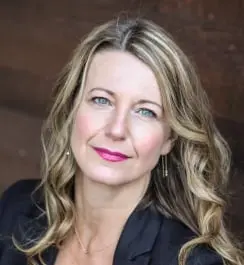 | 1 LU |
 | 1 LU |
When Cranston Public School District set out to design a new elementary school, Garden City Elementary, students were given the opportunity to not just voice their opinions and ideas; they were asked to co-design the building. To do this, a project-based learning experience was embedded into the 2nd, 3rd, and 4th-grade curricula in which students were asked to design their ideal learning environment regardless of their prior knowledge, access to resources, or ability to attend in person. This intentional and welcoming prompt fostered awareness among students of opportunities to engage in critical thinking as they explored their ideas through 2D and 3D spatial representations. Throughout the entire project, each student was included as an active participant and their voice was represented, heard, and valued, from ideation to prototyping, and implementation. As a result of this process, teachers began to shift their mindsets and actions around student agency, creativity, and self-advocacy. This project was initiated through a concerted effort by Cranston Public School District to actualize aspects of their strategic plan around stakeholder engagement, core student learning objectives, and equity–specifically:
By partnering with Fielding International, the building’s architect and PBL coach, and Natural Pod, a B Corp certified sustainable furniture company, the district found the support it needed to align its vision, educational program, and environment. Now that the school is built and in use, this session will guide participants through the entire student experience. Participants will experience shifting their perspectives to more closely align with that of an elementary student and gain insights regarding how to gather and implement student voice in a clear and actionable manner throughout the visioning, design, construction, and post-occupancy phases.
Learning Objectives:

Bryan is the principal at Garden City Elementary, part of Cranston Public Schools in Cranston, Rhode Island. As a former classroom teacher, Bryan has a deeply rooted passion for creating dynamic learning experiences, engaging students, educators, and staff alike within their learning community. Bryan received a Masters of Education from Providence College, with an emphasis in Elementary and Middle School Administration/Principalship.

Nathan is a Senior Learning Designer at Fielding International, where he works with innovative schools and educators around the world to create environments where learners and communities thrive. In addition to his role at Fielding, Nathan serves as USA Country Lead for the Finnish organization HundrED, globally recognized as a leader in education innovation. Nathan is the founder and board chair of Exploration High School, known as a public school for public good.

Bridgitte, CEO and founder of British Columbia-based company Natural Pod, is dedicated to creating better learning environments through the use of beautifully designed and high quality education furniture made from sustainable materials with an emphasis on environmental awareness and stewardship. Bridgitte also serves as President on the board of the Green Schools National Network, creating broad-based initiatives and successful strategies aimed at fostering healthy, sustainable K-12 schools across the United States.
This track focuses on Resiliency and addresses how learning environments support the development of students and communities that have the strength and flexibility to withstand adversity and adapt to change. The COVID-19 pandemic demonstrated the essential role that schools have in stabilizing communities during a time of crisis. How do schools support the development of strong community culture among teachers and students? How do schools foster physical and mental health and wellness to ensure all are ready and supported to learn? How do we create learning environments that are strong in intent yet adaptable to change? How do we learn from what does not work and further, learn to take risks daily to expand our comfort zone? What can we learn from research and our responses to past events to inform how to build toward a resilient future where we can withstand what crises and challenges the future brings? Topic areas, seen through the lenses of both Art and Science, include sustainability, physical and mental health, community, school climate and culture, safety, and security.
Primary Core Competency
Community Engagement: Leads the internal and external communities through a discovery process that articulates and communicates a community-based foundational vision, forming the basis of a plan for the design of the learning environment. The vision is achieved through a combination of rigorous research, group facilitation, strategic conversations, qualitative and quantitative surveys and workshops. Demonstrates the skill to resolve stakeholder issues while embedding a community's unique vision into the vision for its schools.